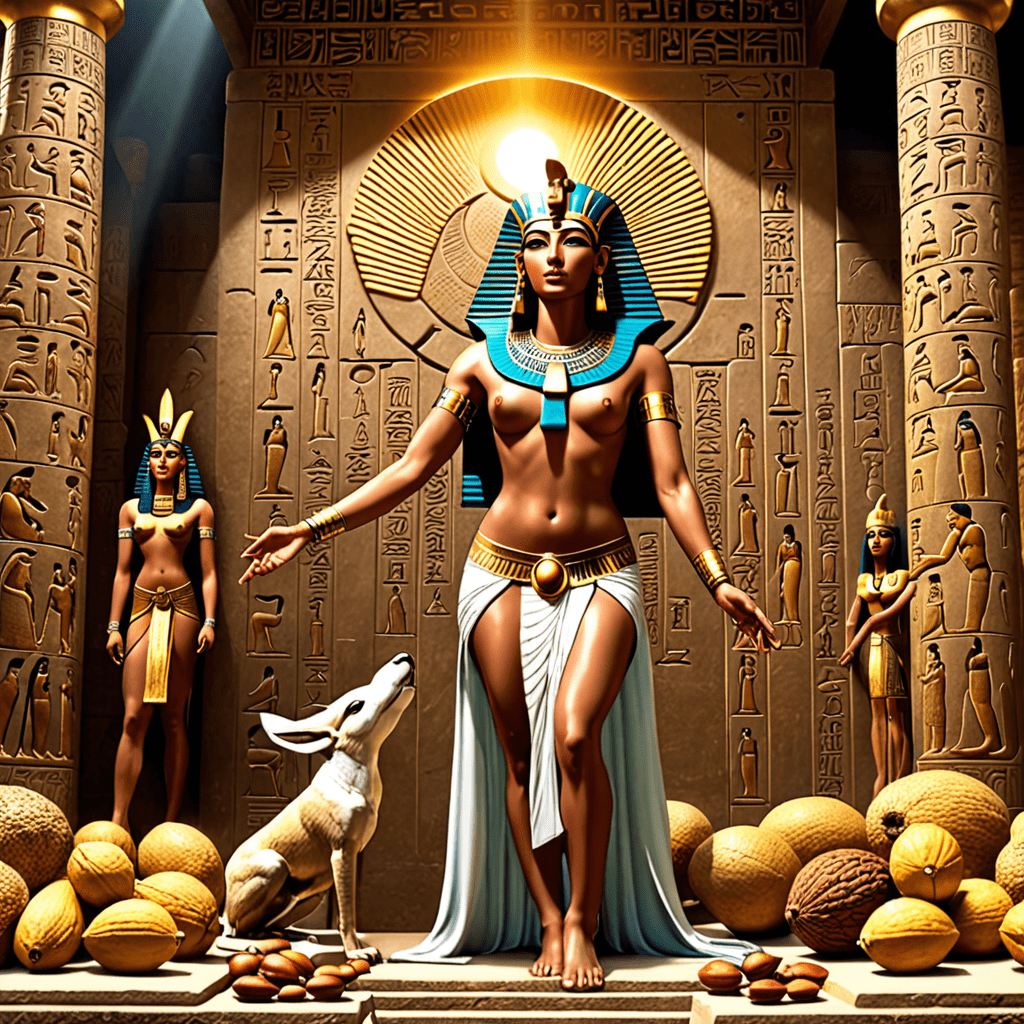The Myth of the Goddess Nut in Ancient Egypt
Who is Goddess Nut in Egyptian Mythology?
In Ancient Egyptian mythology, Nut, also known as Nuit, was the goddess of the sky and the heavens. She was often depicted as a woman adorned with stars arching over the earth. Nut was considered one of the oldest deities and was believed to give light and life to the world.
What is the Story of Goddess Nut?
According to Egyptian legend, Nut was the daughter of the god Shu (air) and the goddess Tefnut (moisture). She was married to Geb, the god of the earth. Nut and Geb had four children: Osiris, Isis, Set, and Nephthys.
However, Ra, the sun god, grew concerned about a prophecy that one of Nut’s children would overthrow him. To prevent this, Ra forbade Nut from giving birth on any day of the year. In response, Thoth, the god of wisdom, played a game of draughts with the moon, betting that he could win enough light to create five extra days. Thoth succeeded, and these days became the five intercalary days at the end of the year, during which Nut gave birth to Osiris, Horus the Elder, Set, Isis, and Nephthys.
What Symbolism does Nut Represent?
Goddess Nut symbolizes the concept of rebirth and renewal. Her arched body is seen as the sky embracing the earth, signifying the unending cycle of life, death, and regeneration. Nut’s role as the sky goddess also represents protection, providing a celestial canopy under which the world exists.
Why is Goddess Nut Important in Ancient Egyptian Culture?
Nut played a vital role in Ancient Egyptian spirituality by offering a gateway between the living and the divine realms. She oversaw the safe passage of the sun during the night, protecting it from chaos and allowing for its rebirth in the morning. Nut’s presence in myths surrounding creation and the afterlife emphasized her significance in guiding souls and ensuring cosmic balance.
FAQ – The Myth of the Goddess Nut in Ancient Egypt
Who is Goddess Nut in Ancient Egyptian mythology?
Goddess Nut is a prominent deity in Ancient Egyptian mythology, often depicted as the sky goddess who swallows the sun each evening, giving birth to it again each morning.
What is the significance of Goddess Nut?
Goddess Nut symbolizes the sky and the universe, representing protection, renewal, and the cycle of life. She is also associated with fertility and rebirth.
How is Goddess Nut typically portrayed?
Goddess Nut is commonly depicted as a woman adorned with stars, arching over the earth. She is sometimes depicted as a cow, symbolizing abundance and nourishment.
What role does Goddess Nut play in Ancient Egyptian cosmology?
In Ancient Egyptian cosmology, Goddess Nut is believed to be the mother of the sun god Ra, the moon god Khonsu, and the deities Isis, Osiris, Set, and Nephthys. She is also associated with the afterlife and guiding souls to the realm of the dead.
Why is Goddess Nut worshipped in Ancient Egypt?
Goddess Nut is worshipped for her protective and nurturing nature, as well as her role in ensuring the continuation of life and the cycle



